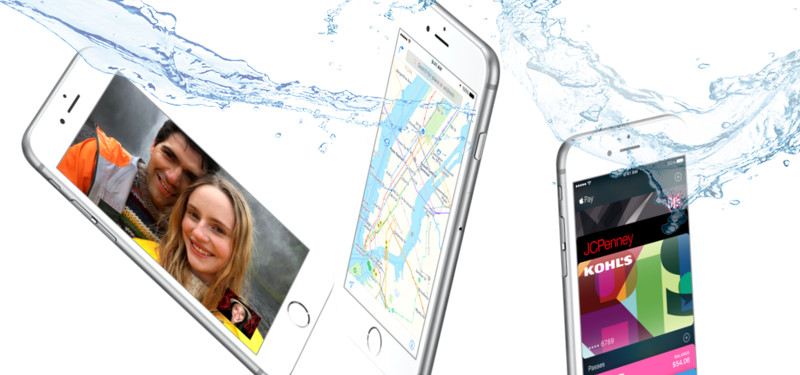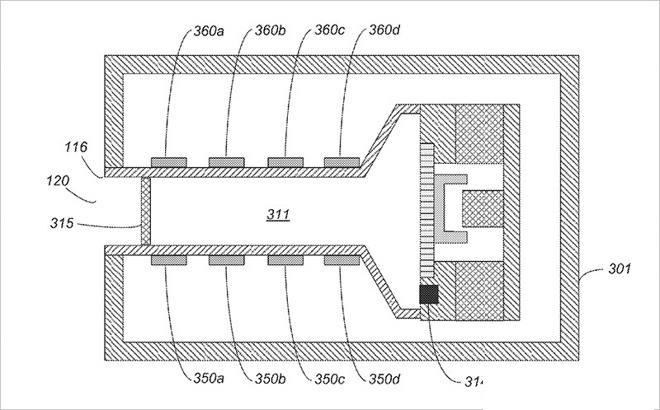New Apple Invention Utilizes Electrodes to Dry Out a Wet iPhone

Toggle Dark Mode
According to the U.S. Patent and Trademark Office, a patent application was filed on Apple’s behalf in May 2014, showing the concept of a so-called “Liquid expulsion from an orifice” technology.
In essence, it describes a novel method by which water, or any other soluble fluid, is transported out of an acoustic chamber. The application suggests that the company’s currently working on water resistant portable devices and, more specifically, those that are capable of expelling water from speaker and microphone cavities using varied electric charges and acoustics.
 The general theory behind how the mechanism works, is to introduce hydrophobic properties to conductive elements trapped within an acoustic cavity — such as a speaker or microphone chamber — by varying their respective surface charges.
The general theory behind how the mechanism works, is to introduce hydrophobic properties to conductive elements trapped within an acoustic cavity — such as a speaker or microphone chamber — by varying their respective surface charges.
Apple currently utilizes a fine mesh screen that is placed over device openings to prevent foreign objects and liquid from entering, however there is still a chance of water retention when the device is immersed or subjected to water under pressure. Likewise, condensation may accumulate within the chamber over time, depending, of course, on humidity and local temperature fluctuations, which would provide for a very unideal situation for sensitive electronic components.

As proposed by the new invention, a series of sensors would be placed inside the acoustic module and would be used to detect the presence of moisture. Additionally, other implementations would rely on existing acoustic sensors — such as onboard microphones — to accomplish the ultimate task via tone analysis.
If it’s determined that liquid has entered the acoustic module, then a surface charge is applied to conductive elements lining the chamber’s walls. Configured to conform to the acoustic cavity’s shape, those elements, for example, would spring into action as tube-shaped wire coils. Apple’s patent goes on to note that these conductive elements are first covered with a protective layer of dielectric material.
When a conductive element’s surface charge changes between positive, neutral and negative, that particular region’s water sensitivity is modified, meaning that an electrode can be configured to attract or repel liquid. For instance, a positive charge might reduce an area’s water retention properties, while a negative surface charge has the opposite effect and pushes liquid away.
Apple claims that speaker drivers might also assist in liquid evacuation, in theory, by outputting energy pulses, or sound waves, that propagate through the acoustic channel. In other words, pushing out a fluid by repetitious, consecutive force.
It’s not clear if or when Apple plans to put the water expulsion invention into action anytime soon, however the company already employs passive waterproofing measures in its current product lineup.
The iPhone 6s, for instance, was found to include a perimeter gasket and silicone-sealed cables; while the Apple Watch boasts a water resistant design, including the encapsulated S1 system.
It’s also important to note that recent rumors suggest Apple is currently mulling a “ruggedized” next-generation iPhone, boasting both water and dust-proof features, although the exact specifications were expectedly unavailable.
[The information provided in this article has NOT been confirmed by Apple and may be speculation. Provided details may not be factual. Take all rumors, tech or otherwise, with a grain of salt.]






